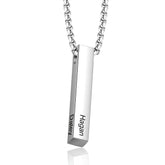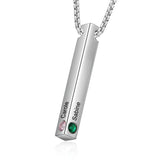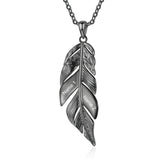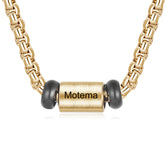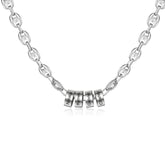How to Spot Fake Jewelry: A Guide to Avoiding Scams
You’ve just opened a little velvet box, heart racing, expecting that long-awaited sparkle—only to realize something feels off. Maybe the metal looks dull. Maybe the “diamond” doesn’t catch light quite right. Whether it’s a gift, a vintage find, or an online purchase, discovering fake jewelry isn’t just frustrating—it’s deeply personal. This guide will walk you through how to tell real from replica, and protect yourself from costly and emotional disappointment.
1. Why Spotting Fake Jewelry Matters
Jewelry is more than a fashion choice—it’s a symbol. Engagement rings, heirloom brooches, graduation pendants, and mothers jewelry all carry stories. When you find out that something so meaningful is fake, it’s not just a matter of financial loss—it can feel like betrayal.
Unfortunately, the jewelry market—especially online—is full of counterfeits, clever replicas, and misleading sellers. Some fake pieces are designed to deceive experts. That’s why knowing what to look for can make the difference between an unforgettable gift and an expensive regret.
2. Quick Signs Your Jewelry Might Be Fake
Trust your eyes—and your instincts
Before you dig into testing kits and certifications, your senses can often give you an early warning. Here are some telltale signs that a piece might not be what it claims:
Visual Clues
- Color inconsistencies—gold or silver plating wearing off to reveal a different metal underneath
- Fake diamonds or gemstones appear cloudy, glassy, or overly brilliant (a common sign of cubic zirconia)
- Stamped logos or hallmarks look shallow or uneven
- Obvious seams or casting flaws on the metal
Feel and Finish
- Feels lighter than expected—real gold and platinum are dense
- Rough edges, peeling, or a strong metallic smell can indicate poor plating
- Clasps or hinges that are loose or uneven signal cheap production
If anything about a piece feels “off,” pause before wearing or buying it. Gut reactions are often your best early defense.
3. How to Test the Metal
Step 1: The Magnet Test
Gold, silver, and platinum are non-magnetic. If your jewelry is strongly attracted to a magnet, it likely contains iron or nickel—which means it’s not solid precious metal.
Step 2: Look for Hallmarks
Genuine pieces often include small engraved numbers or words indicating metal content:
- 10K, 14K, 18K, 22K (Gold)
- 925 or Sterling (Silver)
- PT or 950 (Platinum)
Be aware: counterfeiters also stamp fake hallmarks. A stamp alone doesn’t prove authenticity—but it’s a good starting point.
Step 3: Conduct an Acid Test
Testing kits use different acids for different metals. When applied to a small scratch on the piece, the reaction reveals whether the metal is real or plated. These kits are affordable online, but should be used carefully—test in an inconspicuous area, and always follow safety precautions.
Step 4: Seek Professional Appraisal
If in doubt, a certified jeweler can verify materials and give a formal valuation. Appraisals are especially important for vintage or high-value purchases.
4. How to Test Gemstones
Diamond or Dupe?
Not all sparkle is created equal. Fake gemstones, especially diamonds, are increasingly convincing—but there are still simple tests you can do at home.
Fog Test
Breathe on the stone like you would a mirror. A real diamond won’t fog up—it disperses heat immediately. Fakes will stay fogged for several seconds.
Loupe Inspection
A 10x magnifying loupe reveals what the eye can’t. Real diamonds often have small inclusions (flaws), while fakes like cubic zirconia look unnaturally perfect. Also check the setting—real stones are rarely set in cheap or uneven mounts.
Light Test
Diamonds reflect light in a unique way: bright white (brilliance) and rainbow flashes (fire). Moissanite and CZ tend to create overly “rainbowy” reflections.
UV Light
Many real diamonds fluoresce blue under UV light. Not all do—but if yours glows a weird yellow or green, that’s a red flag.
For colored gemstones, like sapphires or emeralds, home tests are more limited. Reputable sellers will provide gem lab certificates—don’t be afraid to ask for one before you buy.
5. How to Avoid Scams When Buying Jewelry
Scams aren’t just online—though that’s where they thrive
From shady websites to fake certificates and “limited time” offers, the jewelry world is unfortunately full of deception. Here’s how to stay ahead of it.
Buy from Verified Sellers
Always check reviews, certifications, and business credentials. Look for jewelers who are part of industry associations (like GIA, JBT, or BBB).
Know the Return Policy
Scammers often offer “all sales final” deals. A clear, transparent return policy is a strong sign of legitimacy.
Beware of Prices Too Good to Be True
Genuine gold and diamonds have market prices. If someone’s offering a 2-carat diamond ring for $200, walk away—fast.
Ask for Paperwork
Reputable jewelers provide receipts, certificates, and warranties. If they hesitate or deflect, take that as your cue to leave.
Trust Your Instincts
When something feels “off”—from the website’s language to the way a seller avoids specific questions—listen to that gut feeling. It’s probably trying to save you money.
6. When It’s More Than Just Money
Not all fake jewelry scams come down to dollars and cents. Sometimes, the worst part is what it steals emotionally. Maybe you saved for months for that bracelet. Maybe the ring was a gift from your grandmother. Maybe you thought it was real because someone you trusted said it was.
And maybe it doesn’t matter that it wasn’t gold—because what it represented was real. But still, the sting lingers.
When you’re shopping for meaningful pieces—especially something like mothers jewelry or an engagement ring—it’s worth the extra effort to verify authenticity. You’re not just buying metal and stones. You’re buying memory. You’re buying trust.
7. FAQ – People Also Ask
How can you tell if jewelry is real or fake?
Look for hallmark stamps, check with a magnet, inspect the weight and shine, and use basic at-home tests like the fog test for diamonds. For complete certainty, have a jeweler professionally appraise it.
What are common signs of fake gold jewelry?
Fake gold often fades, peels, or leaves green marks on your skin. It may be attracted to magnets, feel too light, or lack proper hallmarks like 14K or 18K stamps.
How do you test if a diamond is real at home?
Breathe on the stone and see if it fogs. Use a loupe to check for flaws. Hold it under UV light. Compare its sparkle and weight to a known diamond, or use a diamond tester if available.
What are the risks of buying fake jewelry?
Financial loss, allergic reactions to cheap materials, tarnishing, and emotional disappointment—especially if it was a gift or sentimental item. Fake jewelry can also damage your trust in sellers.
How can I avoid jewelry scams online?
Buy from reputable sources with verified customer reviews. Check for clear return policies and proof of authenticity. Avoid deals that pressure you to buy fast or seem too good to be true.

